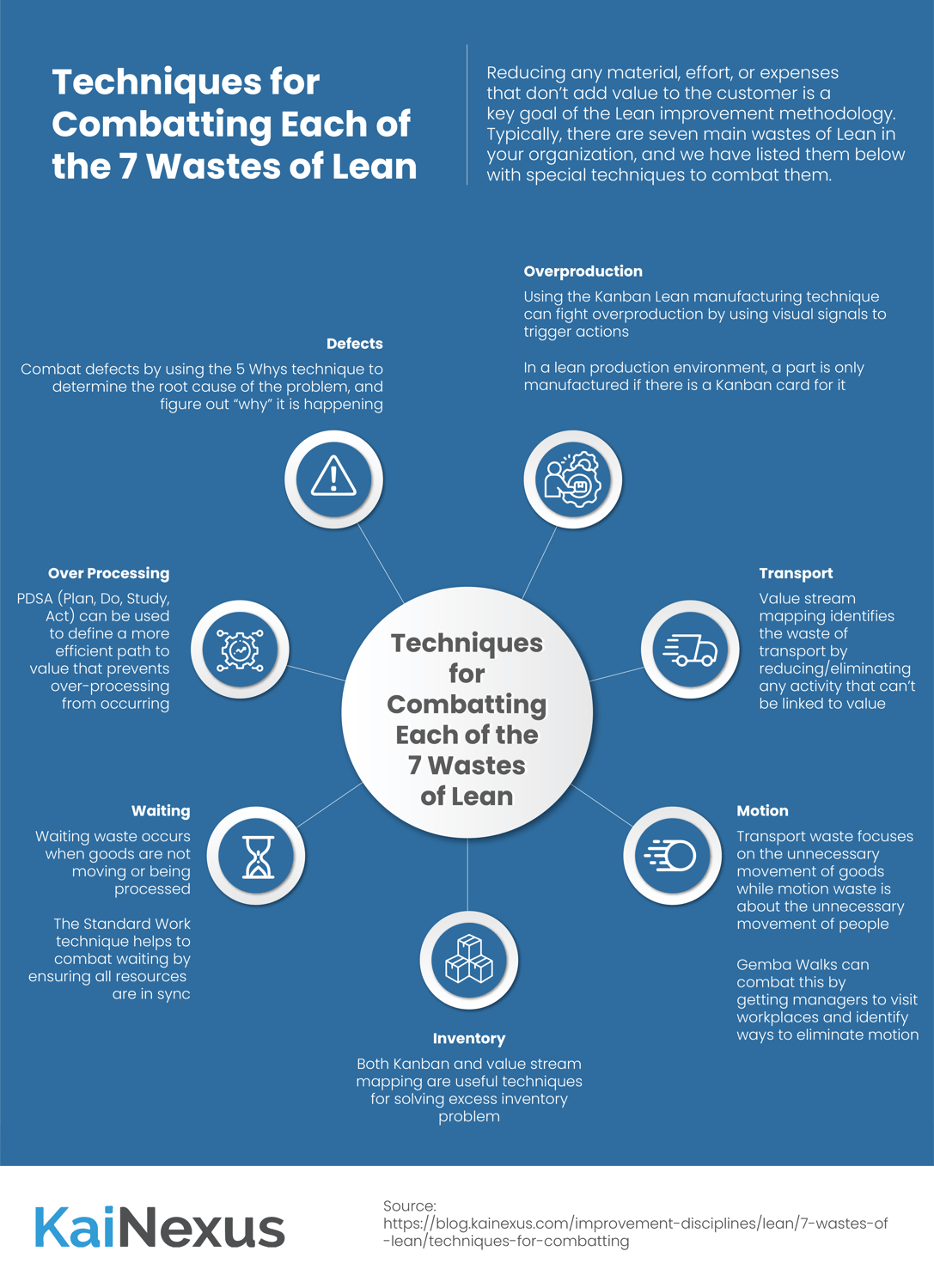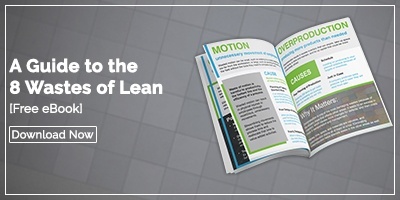 One of the core goals of the Lean improvement methodology is the reduction of any material, effort, or expense that does not ultimately add value to the customer. Practitioners have identified seven distinct types of waste and developed specific techniques to combat them. Whether your organization practices the Lean methodology or not, knowing where to look for waste and what to do when you find it is important.
One of the core goals of the Lean improvement methodology is the reduction of any material, effort, or expense that does not ultimately add value to the customer. Practitioners have identified seven distinct types of waste and developed specific techniques to combat them. Whether your organization practices the Lean methodology or not, knowing where to look for waste and what to do when you find it is important.
Overproduction
Overproduction happens when something is created before it is needed. Overproduction is considered one of the worst types of waste because it is highly costly, degrades quality, and contributes to other types of waste.
Kanban is a Lean manufacturing technique that was developed to fight overproduction. Kanban is a visual signal that’s used to trigger an action. The word kanban is Japanese and roughly translated means “card you can see.” In a lean production environment, a part is only manufactured (or ordered) if there is a kanban card for it. This adds control to manufacturing or other processes.
Transport
The waste of transport includes any unnecessary movement of raw materials, works-in-progress, or finished products. Not all transport can be eliminated, of course, but limiting it to what is strictly necessary is an important goal of Lean organizations.
Value stream mapping is a useful approach for identifying the waste of transport. All parts of a process, including transportation, are documented and aligned to value for the customer. Any activity that can’t be linked to value is targeted for reduction or elimination.
Motion
The waste of transport is about the unnecessary movement of goods, while the waste of motion is about the unnecessary movement of people. Inadequately stocked and poorly organized workspaces are frequent contributors to the waste of motion.
Gemba Walks are a useful approach to combating this waste. Managers can go to the place where work is being done to observe, ask questions, and identify opportunities to eliminate unnecessary motion.
Inventory
Inventory waste occurs when the supply of raw goods, works-in-progress, or finished products exceeds the immediate demand. It can be a symptom of overproduction or an interrupted process flow.
Kanban and value stream mapping can be applied to an excess inventory problem.
Waiting
Whenever goods are not either moving or being processed, the waste of waiting occurs. Wait time results in lost capacity and efficiency and it increases the lead time to the customer while failing to add any value.
Because waiting is often the result of resources that are not in sync, defining, documenting, and implementing Standard Work can help.
Over Processing
Over processing occurs when complex processes are used when a simple one would do. Over processing can also involve the use of expensive equipment that is not necessary. In healthcare, unnecessary diagnostic tests might be considered over processing.
When over processing is suspected, the PDSA (Plan, Do, Study, Act) continuous improvement approach can be applied to define a more efficient path to value.
Defects
Defects are perhaps the most obvious form of waste. When a product or part can’t be used for its intended purpose, both time and resources are lost.
Defects can be battled by employing the 5 Whys technique to uncover the root cause of the problem. By digging deeper and deeper into the issue each time a new “why” question is asked, teams can identify and resolve the reason for the defect.
Some degree of waste is inevitable, but the ability to minimize it is what sets profitable companies apart. Fortunately, there are great tools and techniques for addressing waste in whatever form it takes.




Add a Comment